The 15 Most Iconic Logos of All Time
Logos are an essential part of any brand's identity. An iconic logo transcends branding and becomes a cultural symbol, instantly recognisable even by those unfamiliar with the company or product. In our visually-driven world, logos represent brands and become part of our shared cultural experience.
This article will explore 15 of the most iconic logos ever created. We'll examine what makes them memorable, their history, and their impact. Understanding what elevates a logo to iconic status inspires designing impactful branding.
Table of Contents
What Makes a Logo Iconic?
What transforms an ordinary logo into a beloved icon? There are several key factors:
- Simplicity – The most iconic logos are simple, clean, and easy to remember. Complexity is the enemy of memorability.
- Relevance – The logo imagery directly relates to the company or product. This creates an instant connection in people's minds.
- Colour – Vibrant, strategic use of colour is critical. Colors trigger powerful emotional associations.
- Memorability – People need to recognise the logo without conscious thought instantly. Striking symbols burn themselves into our collective consciousness.
- Timelessness – Trends come and go. Iconic logos remain relevant decade after decade by perfectly encapsulating the brand essence.
- Adaptability – The logo can resize and adapt without losing impact. This flexibility ensures it remains effective in diverse applications.
- Meaning – Logos become icons by creating meaning and associations beyond identifying a company. They symbolise eras, emotions, values, or experiences.
With these fundamental principles in mind, let's explore the stories behind 15 of the most iconic logos ever designed.
1 – Apple

The distinctive Apple logo has become a globally-recognised icon. The bitten apple symbolises the company's mission to take a bite out of the computing industry and challenge the status quo.
Origins
The original Apple logo featured a detailed image of Isaac Newton sitting under an apple tree. Designed by Ronald Wayne, it was a nod to Sir Isaac Newton's discovery of gravity through an apple falling on his head.
This overly complex logo only lasted a year, replaced in 1977 by the rainbow-striped apple we know today. Graphic designer Rob Janoff developed the logo, one of the most well-known in the world.
Cultural Impact
Apple's logo helped brand its products as simple, clever, and revolutionary. The rainbow colours represented the company's introduction of colour graphics to computing.
When Apple shortened its name from Apple Computer in 2007, it removed the colours to showcase sleek, high-tech products like the iPhone. The minimalist monochrome apple perfectly encapsulated Apple's brand identity.
Few logos are so famous globally that they do not need the text name. Apple's logo has reached that iconic status.
2 – Coca-Cola
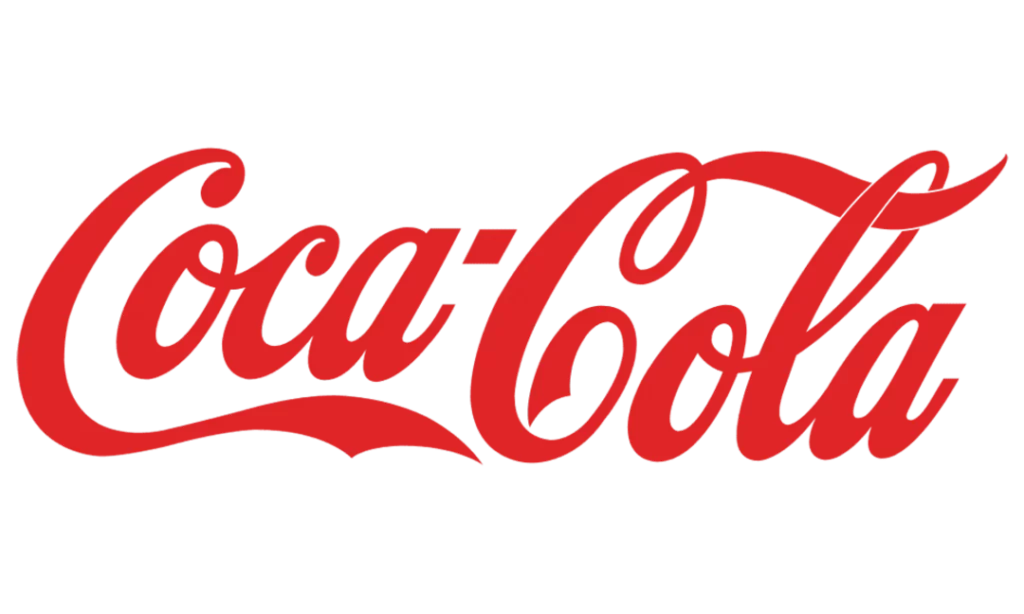
Coca-Cola's distinctive script logo is recognised the world over. The flowing Spencerian script evokes timeless Americana and classic American products.
Origins
In 1886, Coca-Cola's co-founder, Dr. John Pemberton, wanted to develop a unique logo for his new fountain drink. His bookkeeper, Frank Mason Robinson, created the now-classic script logo. He also suggested Coca-Cola, thinking two C's would look attractive in advertising.
Robinson's penmanship was inspired by the popular Spencerian script style taught in American schools. The flowing cursive letters intentionally resemble an invitation to the refreshment and community that Coke represents.
Cultural Impact
Coca-Cola's logo reflects nostalgia for classic soda shops and diners. The cursive font transports viewers back to a simpler time.
Even as products and advertising changed, the logo endured. Coca-Cola only made minor modifications, knowing equity resides in the familiarity of this iconic brand mark.
3 – Nike
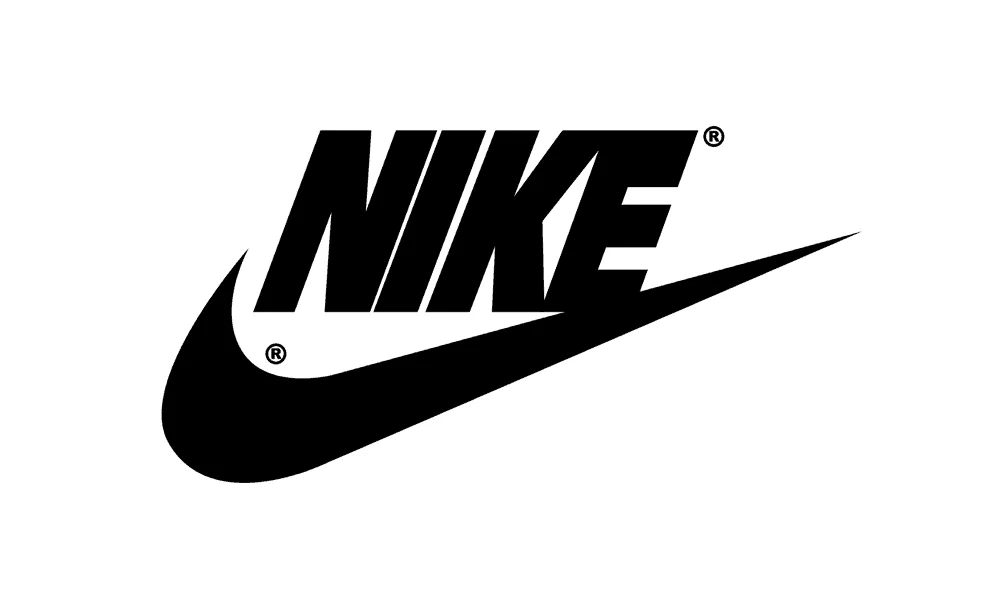
The Nike “swoosh” is one of the most recognisable brand symbols in the world. The swoosh encapsulates motion, speed, and athletic excellence.
Origins
In 1971, Nike (then Blue Ribbon Sports) launched a search for a bold, dynamic logo. Graphic design student Carolyn Davidson was paid just $35 to create several logo options.
One design resembling a wing or feather caught the eye of company co-founder Phil Knight. He liked the connotation of movement and speed.
Davidson refined the mark to become the fluid swoosh we know today. She named it after the sound a fast runner makes passing by. The swoosh was trademarked in 1995.
Cultural Impact
The Nike swoosh is the epitome of a simple yet impactful logo. It telegraphs Nike's commitment to speed and athletic performance.
Placing the swoosh on shoes and athletic gear created a sense of movement. It also highlighted the iconic status of Nike products worn by the world's greatest athletes.
The swoosh shapes global sneaker culture and represents the Nike community of rebels and innovators. Its energy inspires athletes worldwide to push their limits.
4 – McDonald's Golden Arches
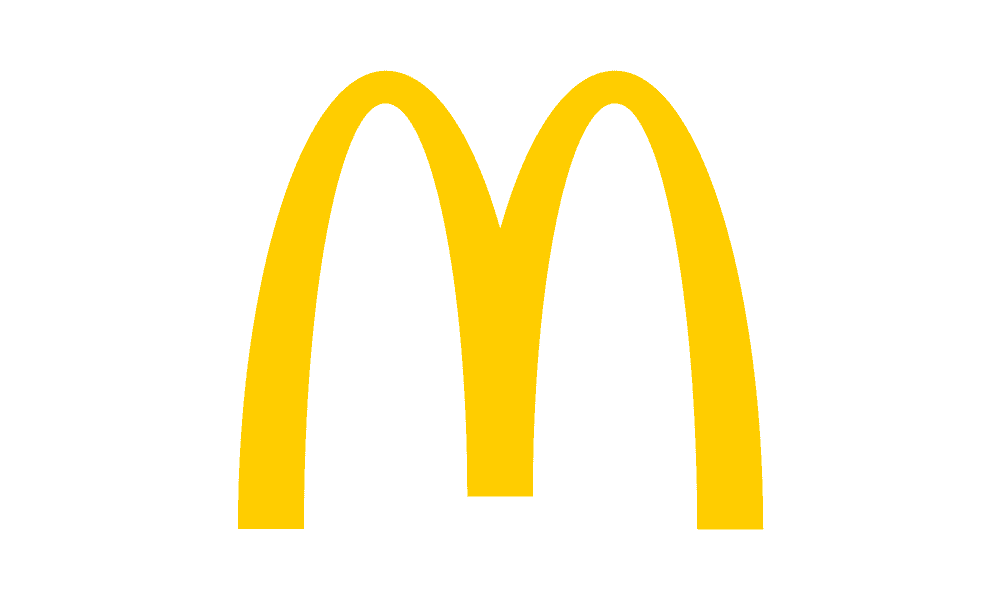
McDonald's golden arches are visual shorthand for quick, affordable American burgers and fries. The iconic arches turn any McDonald's into an instant landmark.
Origins
In 1962, graphic artists developed the Golden Arches as part of a new building design for the restaurant chain. The arches were both functional – drawing attention from a distance – and symbolic of the company.
The arches represented McDonald's welcoming community feel. The two halves formed the letter “M” for McDonald's.
By the 70s, the Golden Arches became McDonald's official logo and the centrepiece of its branding. The minimalist logo is continually adapted to fit modern aesthetics while retaining instant recognition.
Cultural Impact
McDonald's leans hard into its brand nostalgia. The Golden Arches represent fond memories of childhood trips to fast food.
Seeing those iconic arches triggers comfort food cravings for burgers, fries, milkshakes, and playplaces. They offer a taste of tradition amidst your busy day.
Few logos efficiently symbolise an entire product category like the McDonald's arches. They are a universal symbol of convenient, family-friendly fast food.
5 – Target
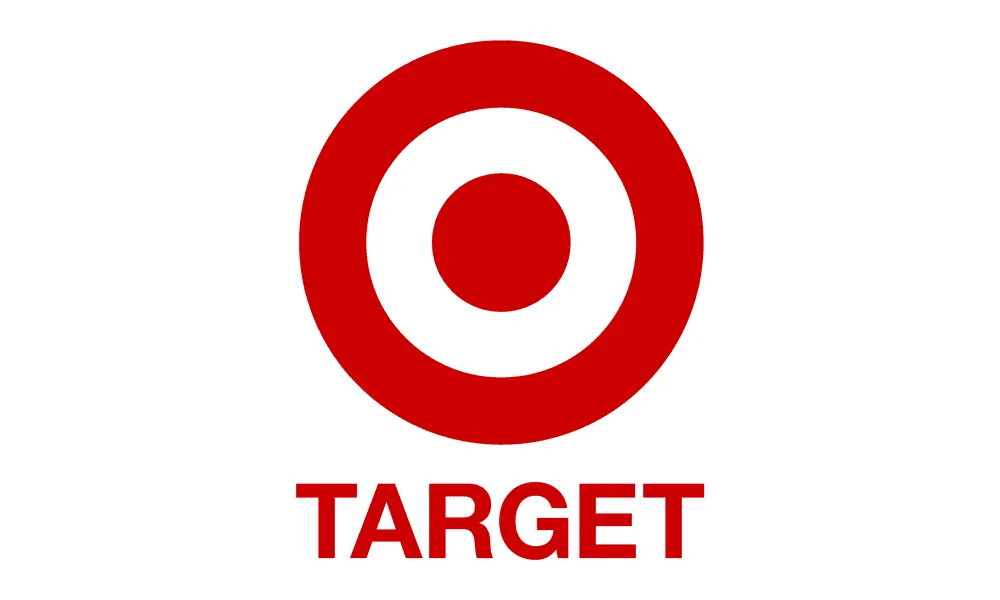
The Target bullseye is an ageless emblem of affordable retail—the red rings radiate energy, vitality, and accessibility.
Origins
In the 1960s, Target leadership sought to develop a logo that embodied their retail vision. The goal was to create an uplifting and energising symbol for the new discount chain.
After testing over a dozen options, the bold concentric circles design was unanimously selected. It immediately captured Target's spirit of fun and vibrancy.
The logo visualises Target hitting the retail bullseye, appealing to trend-savvy customers. The classic design still symbolises Target's mission of affordable innovation decades later.
Cultural Impact
Target's bullseye is a distinctive brand icon. The bold red circles telegraph high-energy retail far more than any text.
The logo is proudly displayed in ‘bullseye's view' out front of every Target location. The bullseye guides shoppers right through the entrance.
Walking through bold bullseye doors has become synonymous with discovering stylish, affordable goods. It's a feeling that Target's core customers love.
6 – Starbucks
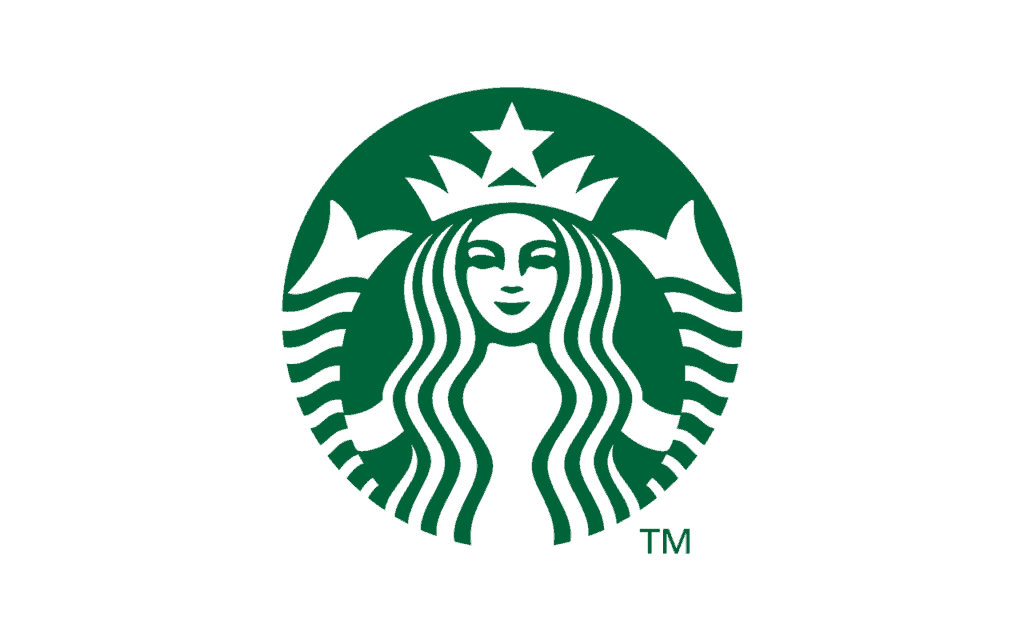
Starbucks‘ iconic two-tailed siren logo captures the old-world romance and seafaring adventure. It reflects the company's origins and passion for coffee's rich history.
Origins
When Starbucks launched in 1971, the founders wanted a logo that evoked coffee's seductive aroma and lore. Inspired by an old Norse woodcut, they chose a two-tailed siren from Greek mythology.
The siren was designed by Terry Heckler and digitised by a group called Heckler Associates. The logo signified Starbucks' quest to bring an alluring coffee experience to America.
In 2011, Starbucks subtly streamlined the logo. Removing text brought more precise focus to the captivating siren.
Cultural Impact
The Starbucks siren is a distinctive mark of quality coffee. She lures customers in with her clever smile and dreamlike stare.
The logo captures Starbucks' positioning of coffee as a luxurious indulgence. Yet the siren presents an approachable friendliness versus elitist opulence.
Starbucks has become an influential pop culture icon, as with all great logos. It remains as relevant today as when Starbucks changed coffee culture over 40 years ago.
7 – Google

Google's playful logo reflects the brand's informal personality and innovative technology. The colourful lettering mirrors the joy of pure search.
Origins
In 1997, Stanford PhD students Sergey Brin and Larry Page launched an ambitious search engine named BackRub. They quickly desired a catchier name and logo.
Borrowing from the mathematical term' googol,' the pair arrived at the name Google. They sought a fun, kid-friendly logo to represent their goal of organising endless information.
1998, Brin used free image editing software to craft the first Google logo. The colourful, mismatched letters captured Google's playful spirit. The emblem has slowly evolved over decades but retains a childlike wonder.
Cultural Impact
Google's logo sparked a trend of approachable, conversational branding in tech. The whimsical design made Google feel like your bright but cheerful friend.
Clicking the colourful Google name inspires optimism about the world's knowledge at your fingertips. It retains a quirky warmth despite Google's global dominance.
The logo reflects Google's enduring commitment to organised information, speed, and innovation. Its fun colours and letters invite you to search and learn.
8 – Lego
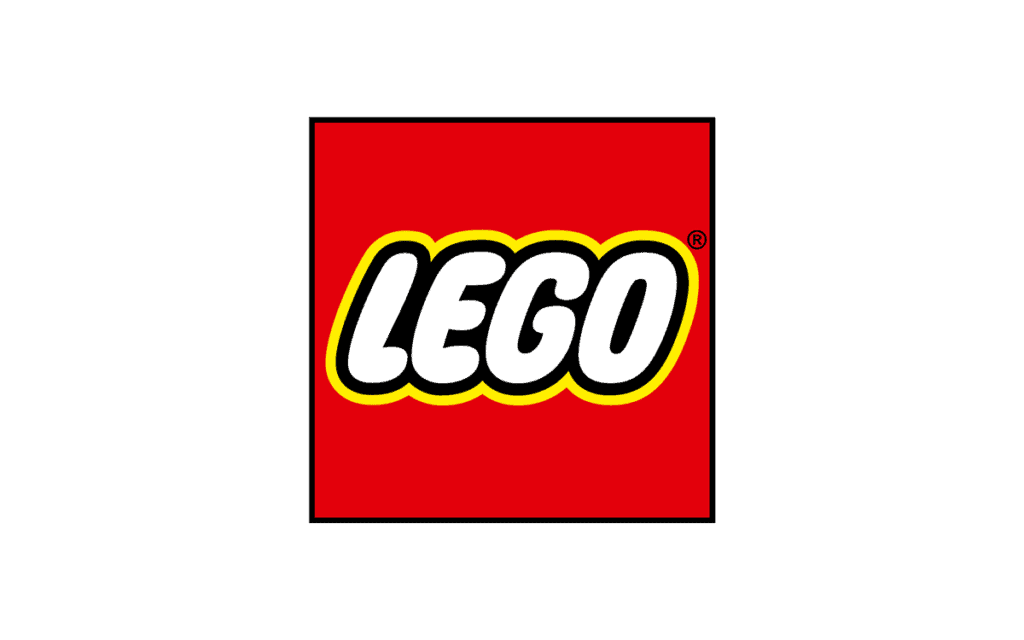
The iconic Lego logo brilliantly represents structured childhood fun. The vibrant red softly shapes the timeless ideals of creativity and connectivity.
Origins
1934, Danish carpenter Ole Kirk Christiansen founded the company that would become Lego. It was initially called LEGO, based on the Danish phrase' leg godt' meaning ‘play well.'
In the 1950s, Christiansen defined the company values of imagination, creativity, fun, and learning. Seeking a logo that visualised these playful ideals, they arrived at the bright red LEGO name.
The logo uses a variant of the Futura Bold typeface to appear friendly and approachable. This perfect encapsulation of Lego has required a few changes for over 60 years.
Cultural Impact
Lego bricks foster innovation and connectivity. The logo reflects structured play, allowing children to build anything they imagine.
The vibrant red evokes youthful energy. It represents generations bonding through shared play and creativity.
Few logos so perfectly blend warmth, nostalgia and potential. For billions worldwide, Lego brings families together through learning and fun.
9 – Mercedes-Benz

The iconic Mercedes-Benz three-pointed star exudes prestige and superior performance. It signals pride in German innovation and craftsmanship.
Origins
In 1909, Mercedes became the first car brand name from DMG, an early German automaker merging with Benz.
Founder Gottlieb Daimler was inspired by a postcard to use a three-pointed star representing the company's mission to dominate land, air and sea. The star first appeared on cars in 1916.
Over decades, the star evolved into the sleek hood ornament we recognise today. It remains unchanged because the Mercedes-Benz brand identity resides within it.
Cultural Impact
The three-pointed star instantly signifies high-performance luxury vehicles. It represents sophisticated German engineering, elevating the driving experience.
The Mercedes emblem stayed consistent while everything from corporate leadership to car styles evolved. It transcended branding to become an enduring status symbol.
Owning a car featuring that iconic star proclaims you've made it. The logo reflects pride in achievement and appreciation for life's finer things.
10 – Shell

The Shell logo has symbolised energy and innovation for over a century through its memorable red-and-yellow shell visual. The shell remains instantly recognisable as gas stations spread globally.
Origins
1900, the Royal Dutch Petroleum Company began using a mussel shell logo. The shell logo soon adorned American gas stations through a partnership between Shell and Texaco.
In 1904, Shell combined its kerosene-inspired red and bright yellow from Spain's national colours into the Shell logo recognised today. The logo links Shell and sustainable energy worldwide.
Cultural Impact
The Shell logo is a beacon drivers rely upon for quick refuelling. The scallop shell shape offers a distinctive silhouette from the highway.
Seeing those friendly yellow and red Shell signs provides reassurance that you can quickly gas up your vehicle as part of life's journey.
Shell has built equity through reliable service. For over a century, the Shell logo has helped motorists worldwide trust they'll soon be back on the road.
11 – Audi
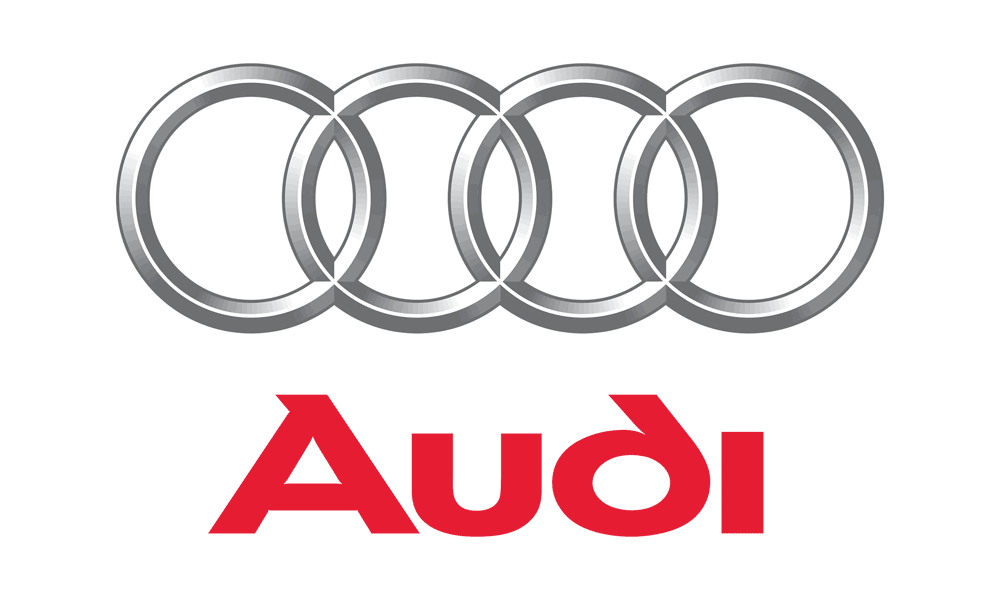
Audi's four overlapping rings portray progressive luxury automobiles. The interconnected shape signals Audi's engineering ingenuity.
Origins
In 1932, four separate car companies merged to form Auto Union. The four rings of the Audi emblem represented this unification.
Graphic artist Franz Xavier Reimspiess designed the logo. The four rings stood for Audi, DKW, Horch and Wanderer – the founding Auto Union members.
In 1985, this logo carried over and evolved into the Audi company we know today. The four rings now signify Audi's global vision.
Cultural Impact
Audi interlocks the four rings to show collaboration, community and precision engineering.
The symmetrical logo telegraphs Audi's ambition as a leader in aesthetics and technology. It reflects Audi vehicles purposely designed and crafted as beautiful machines.
Driving an Audi conveys personal success and an appreciation for German sophistication. Audi's sense of engineered perfection is a point of pride for owners worldwide.
12 – Pepsi
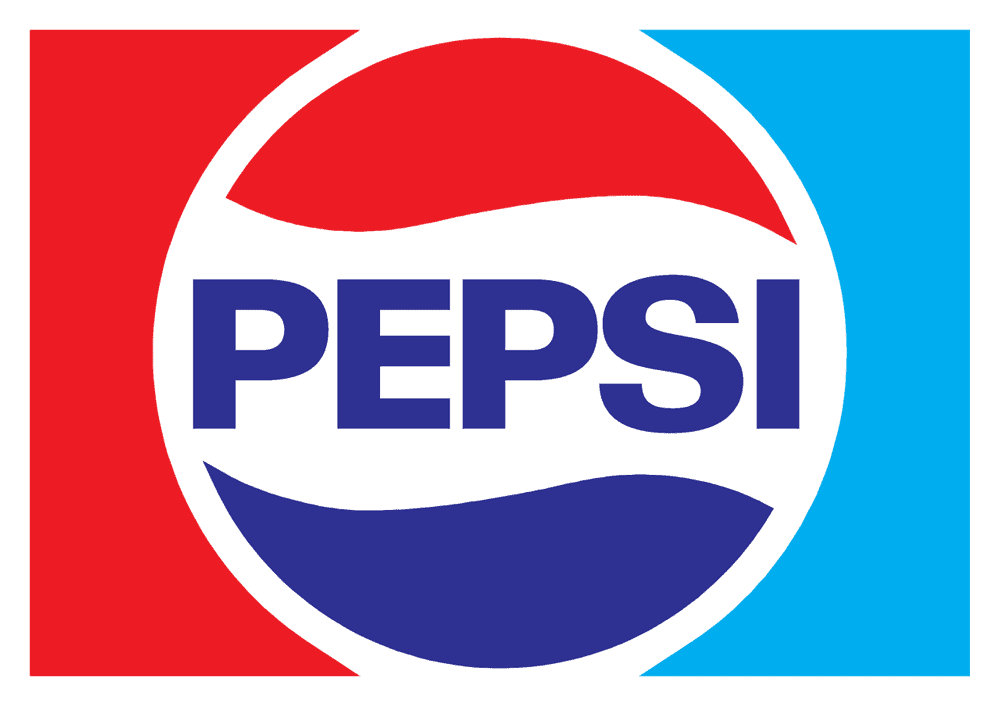
Pepsi's swirly red, white and blue globe logo endears with a fun-loving personality. It signals Pepsi bringing joy to consumers globally.
Origins
In the 1940s, Pepsi sought a new logo conveying excitement. A creative concept emerged of bottle caps creating a globe.
Graphic artist AA Sprague interpreted this idea into a three-part sphere showing the colours of the American flag. The globe visualised Pepsi expanding globally while keeping roots in the USA.
This ‘bottle cap logo' debuted in 1950, receiving refinements to become the icon we know today. The spherical swirl mirrors the carbonation in Pepsi itself.
Cultural Impact
Pepsi's effervescent logo promises refreshing good times. The bubbly, wavy shape sends an invitation to live life spiritedly.
It reflects the upbeat, youthful energy Pepsi instils in every sip. The sphere signals Pepsi's ambition to unite the world through joyful experiences.
The logo's embodiment of fun fashioned Pepsi into the choice of younger generations. Its spirit shaped global soda culture for over seventy years.
13 – IBM
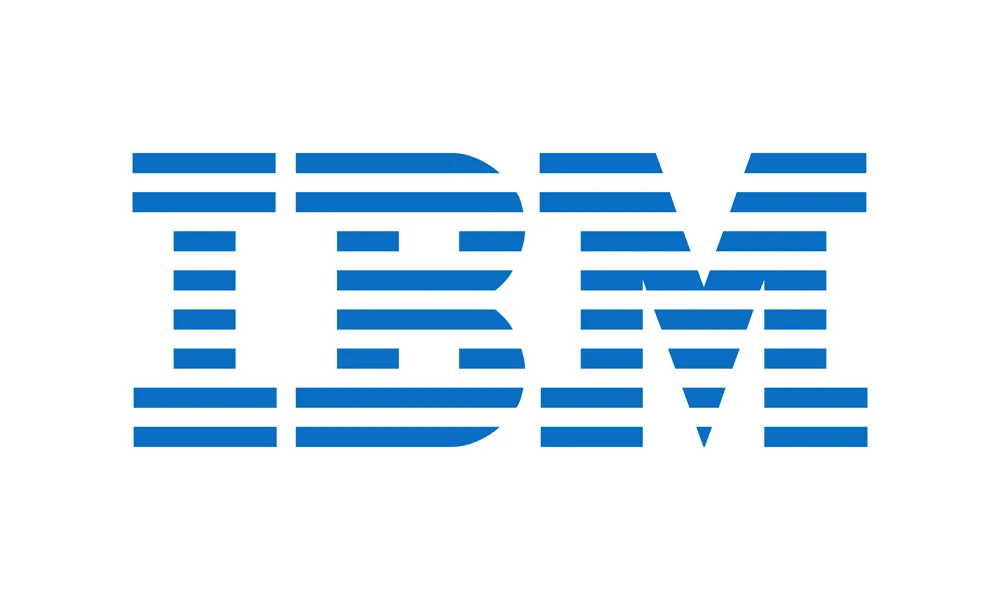
IBM's stripped-down logo relays precision, innovation and solutions. The three bold letters are recognised by businesses worldwide.
Origins
It was formed in 1911 as the Computing-Tabulating-Recording Company (CTR). The name International Business Machines Corporation (IBM) was adopted in 1924.
Paul Rand's iconic 8-bar logo debuted in 1972, replacing the ornate earlier version. The bold, imposing IBM acronym symbolised an industry leader.
Rand's robust design endures half a century later. Through speedy digital era transformations, IBM keeps innovating while maintaining its core identity.
Cultural Impact
IBM's logo reflects its heritage of providing business technology solutions. The solid and grounded letters telegraph the trust and security IBM provides.
IBM relies on its reputation to win new business. Corporations see those three letters and anticipate optimal IT systems and infrastructure.
This timeless logo connects IBM's original computing machines to pioneering today's most advanced AI and quantum technology.
14 – Canon
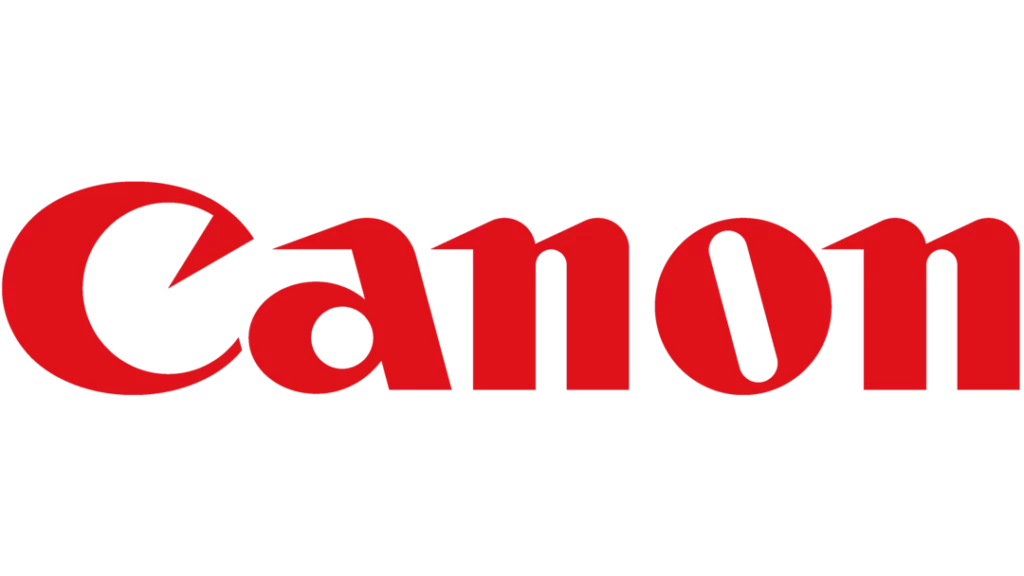
Canon's iconic logo captures the company's spirit of precision and innovation. The embedded ‘C' remains visually impactful from any angle.
Origins
In 1955, Canon sought a global brand symbol representing the camera company's commitment to quality and vision.
Extensive testing revealed a captivating logo hidden within the letter ‘C.' From this experimentation, the Canon' C' logo was born.
The distinctive overlap creates a visual bullseye, portraying the precision and complexity of Canon engineering. The memorable mark brought worldwide recognition to Canon cameras.
Cultural Impact
Canon's overlapping ‘C' telegraphs technical excellence and reliability. It represents Canon continually anticipating and delivering what users need.
The visual toxicity of the Canon ‘C' showcases performance and innovation. Globally, those two letters proudly display Canon's trusted reputation.
For over 60 years, the Canon mark has signified digital imaging at its sharpest. The logo remains synonymous worldwide with superb cameras and optics.
15 – Adidas
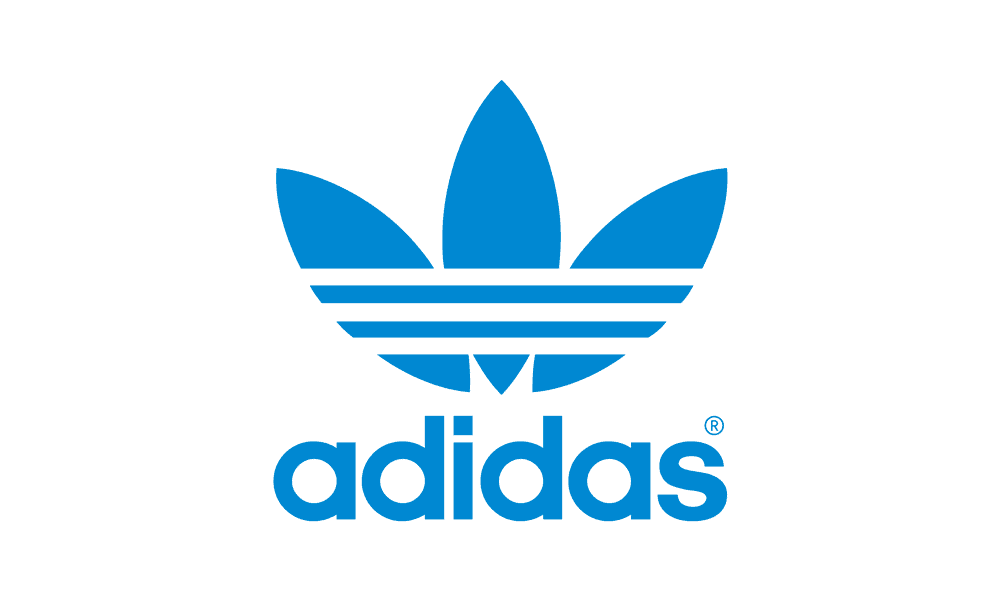
The Adidas trefoil conveys athletic passion, determination, and integrity. Its leaves represent diversity within the brand community.
Origins
Adolf Dassler launched Adidas after splitting from his brother's Puma company. He sought a logo that symbolised the Olympic spirit of sportsmanship.
In 1972, designer Raimund Steyrer created the three-leaf trefoil. The three stripes had long been associated with Adidas shoes. Steyrer stylised them into a timeless symbol of athletic achievement.
The trefoil leaves echo the diversity found within the brand. They also honour Adidas' roots in track and field, soccer, and tennis.
Cultural Impact
Seeing the trefoil boosts athletes' motivation and determination worldwide. It has proudly adorned game-changing innovations like the Predator soccer cleats.
The logo remains a respected symbol within sports culture. Its history of quality and performance is a source of pride for athletes wearing the trefoil.
Adidas sustains relevance by staying true to its ideals of integrity and unity. The trefoil will continue inspiring athletes to pursue greatness with honesty and courage.
Conclusion
The most iconic logos become visual shorthands woven into the cultural fabric. They telegraph core values instantly through colour, shape, and imagery.
These 15 logos demonstrate principles guiding the creation of genuinely timeless branding. Simplicity, adaptability, and relevance enable symbols to resonate across decades.
The most iconic logos capture the imagination. They build communities and foster shared experiences around products. This emotive quality propels logos beyond marketing tools to cultural symbols embraced worldwide.
The Most Iconic Logos Ever (FAQs)
What makes a logo iconic?
Some key attributes that make logos iconic include simplicity, timelessness, adaptability, relevance, memorability, and meaning beyond the company identity. Iconic logos become visual symbols recognised across cultures.
Do iconic logos increase sales?
Iconic logos boost sales by generating emotional connections, familiarity, and nostalgia. Consumers feel good about purchasing from brands with logos that feel comforting and familiar. This loyalty leads to repeat business.
How do colour choices impact a logo?
Colours trigger powerful associations that boost logo memorability. The clever use of colour shapes the perception of the brand. Red conveys excitement, green means organic, and blue signals trust. Iconic symbols use colour intentionally to communicate brand values.
Should logos stay the same or evolve?
Iconic logos like Coca-Cola change minimally over decades. Familiarity builds enormous value. However, occasional refinement keeps logos looking current. The best logos evolve without losing their essence and recognition.
How can companies create lasting logo icons today?
Modern logo icons require simplicity, adaptability, and emotional resonance. Digital-first branding should feel inclusive accessible, and convey purpose and values. Meaningful symbols and bright, flat colours work better than complex illustrations.
